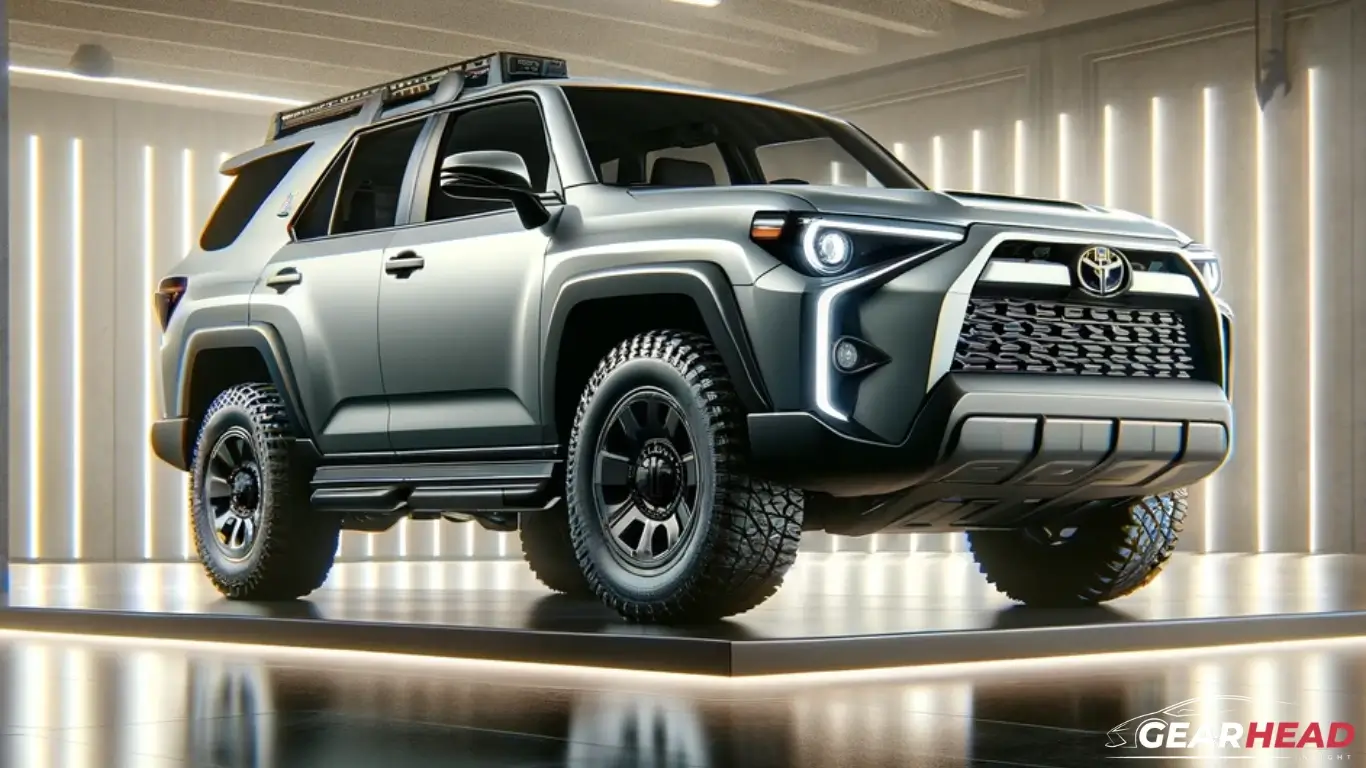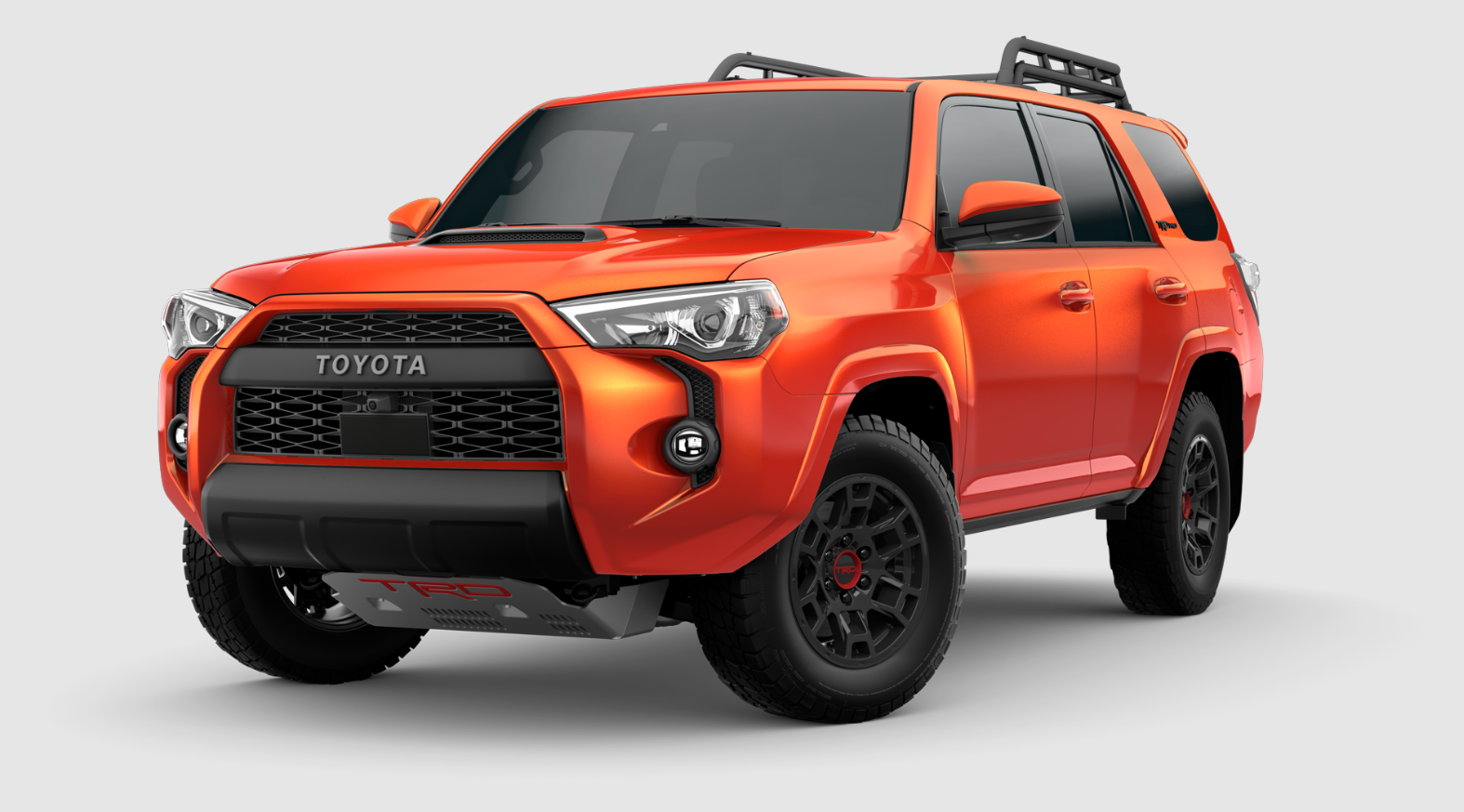The 2025 Toyota 4Runner: A New Era Of Fuel Efficiency?
By admin / April 19, 2024 / No Comments / 2025

The 2025 Toyota 4Runner: A New Era of Fuel Efficiency?
The Toyota 4Runner, a rugged and reliable SUV, has long held a special place in the hearts of off-road enthusiasts and families alike. However, its thirst for fuel has been a constant point of contention. While its powerful V6 engine delivers impressive performance, it comes at the cost of relatively low fuel economy.
But whispers of change are in the air. Rumors abound that the 2025 model year will see a significant shift in the 4Runner’s fuel efficiency story. This article delves into the potential changes, examining the factors driving them, the technologies likely to be implemented, and the potential impact on the 4Runner’s legendary reputation.
The Need for Change:
The automotive industry is experiencing a dramatic shift towards fuel efficiency and electrification. Stricter emissions regulations, rising fuel prices, and growing consumer demand for eco-friendly vehicles are pushing manufacturers to innovate. Toyota, a leader in hybrid technology, is well-positioned to adapt to this changing landscape.
The 4Runner, however, has historically lagged behind its competitors in terms of fuel economy. Its robust body-on-frame construction, traditional V6 engine, and off-road-focused design have made it difficult to achieve significant fuel savings. But the pressure to improve is mounting.
The Potential for Improvement:
While the 2025 4Runner is yet to be officially unveiled, several factors suggest a potential increase in fuel efficiency:
-
Hybrid Powertrain: The most likely scenario is the introduction of a hybrid powertrain. Toyota has a proven track record with hybrid technology, and its expertise in this area could be instrumental in boosting the 4Runner’s fuel economy. A hybrid system could combine a gasoline engine with an electric motor, allowing for regenerative braking and reduced fuel consumption during city driving.
-
Engine Optimization: Even without a full-fledged hybrid system, Toyota could implement engine optimization techniques to improve fuel efficiency. This could include using a more efficient combustion cycle, reducing engine friction, and optimizing the transmission for better fuel economy.
-
Aerodynamic Improvements: While the 4Runner’s boxy design is part of its appeal, it also contributes to its aerodynamic drag. Toyota could explore minor design tweaks to improve airflow and reduce drag, resulting in better fuel economy.
-
Weight Reduction: Reducing the vehicle’s overall weight could lead to improved fuel efficiency. This could be achieved through the use of lighter materials in the body and chassis, or by streamlining certain components.
The Challenges:
While the potential for improvement is real, there are also challenges to consider:
-
Off-Road Performance: The 4Runner’s off-road capabilities are a key selling point. Introducing a hybrid system or making significant aerodynamic changes could potentially compromise its off-road performance. Striking a balance between fuel efficiency and off-road prowess will be crucial.
-
Increased Complexity: Adding a hybrid system or implementing complex engine optimization techniques could increase the vehicle’s complexity and potentially lead to higher maintenance costs.
-
Consumer Perception: Some 4Runner enthusiasts may be resistant to changes that could alter the vehicle’s character. Maintaining the 4Runner’s rugged and capable image while improving fuel efficiency will be a delicate balancing act.
The Impact on the 4Runner’s Legacy:
The 2025 4Runner’s fuel efficiency improvements could have a significant impact on its legacy:
-
Increased Market Appeal: Improved fuel economy could make the 4Runner more appealing to a wider range of buyers, including those who are environmentally conscious or seeking to reduce their fuel expenses.
-
Enhanced Brand Image: A more fuel-efficient 4Runner could enhance Toyota’s reputation as a leader in sustainability and innovation.
-
Potential for New Markets: Increased fuel efficiency could open up new markets for the 4Runner, such as those with stricter fuel economy regulations.
The Future of the 4Runner:
The 2025 4Runner’s fuel efficiency story is still unfolding. It remains to be seen exactly what changes Toyota will implement. However, one thing is certain: the automotive landscape is changing, and the 4Runner will need to adapt to stay competitive.
Whether it embraces hybrid technology, optimizes its existing engine, or finds other ways to improve fuel economy, the 2025 4Runner will likely be a different beast than its predecessors. It will be a fascinating evolution to watch, as Toyota seeks to balance its iconic SUV’s rugged heritage with the demands of a more environmentally conscious world.
A Deeper Dive into the Technological Possibilities:
Hybrid Systems:
- Mild Hybrid: This system uses a small electric motor to assist the gasoline engine during acceleration, reducing fuel consumption. It can also capture energy during braking and use it to power accessories.
- Full Hybrid: This system combines a gasoline engine with a larger electric motor, allowing the vehicle to run on electricity alone for short distances. It also uses regenerative braking to capture energy.
- Plug-in Hybrid: Similar to a full hybrid, but with a larger battery that can be plugged in and charged externally. This allows for longer distances on electric power alone.
Engine Optimization:
- Direct Injection: This technology injects fuel directly into the combustion chamber, improving fuel efficiency and reducing emissions.
- Variable Valve Timing: This system adjusts the timing of valve opening and closing to optimize engine performance and fuel economy.
- Turbocharging: This technology uses exhaust gases to spin a turbine, which forces more air into the engine, boosting power and efficiency.
Aerodynamic Improvements:
- Active Grille Shutters: These shutters close when not needed, reducing air resistance and improving fuel economy.
- Underbody Panels: These panels smooth the airflow under the vehicle, reducing drag.
- Spoiler Design: A properly designed spoiler can reduce air turbulence and improve fuel efficiency.
Weight Reduction:
- Lightweight Materials: Using materials like aluminum, carbon fiber, and high-strength steel can significantly reduce vehicle weight.
- Component Optimization: Streamlining components and removing unnecessary weight can also contribute to fuel efficiency.
Conclusion:
The 2025 Toyota 4Runner is poised to enter a new era of fuel efficiency. While the exact details remain shrouded in mystery, the potential for improvement is undeniable. By embracing innovative technologies and carefully balancing off-road performance with fuel economy, Toyota has the opportunity to create a 4Runner that is both capable and environmentally responsible. The future of this iconic SUV hinges on its ability to adapt to the changing landscape of the automotive industry, and the 2025 model year could be a pivotal moment in its long and storied history.







